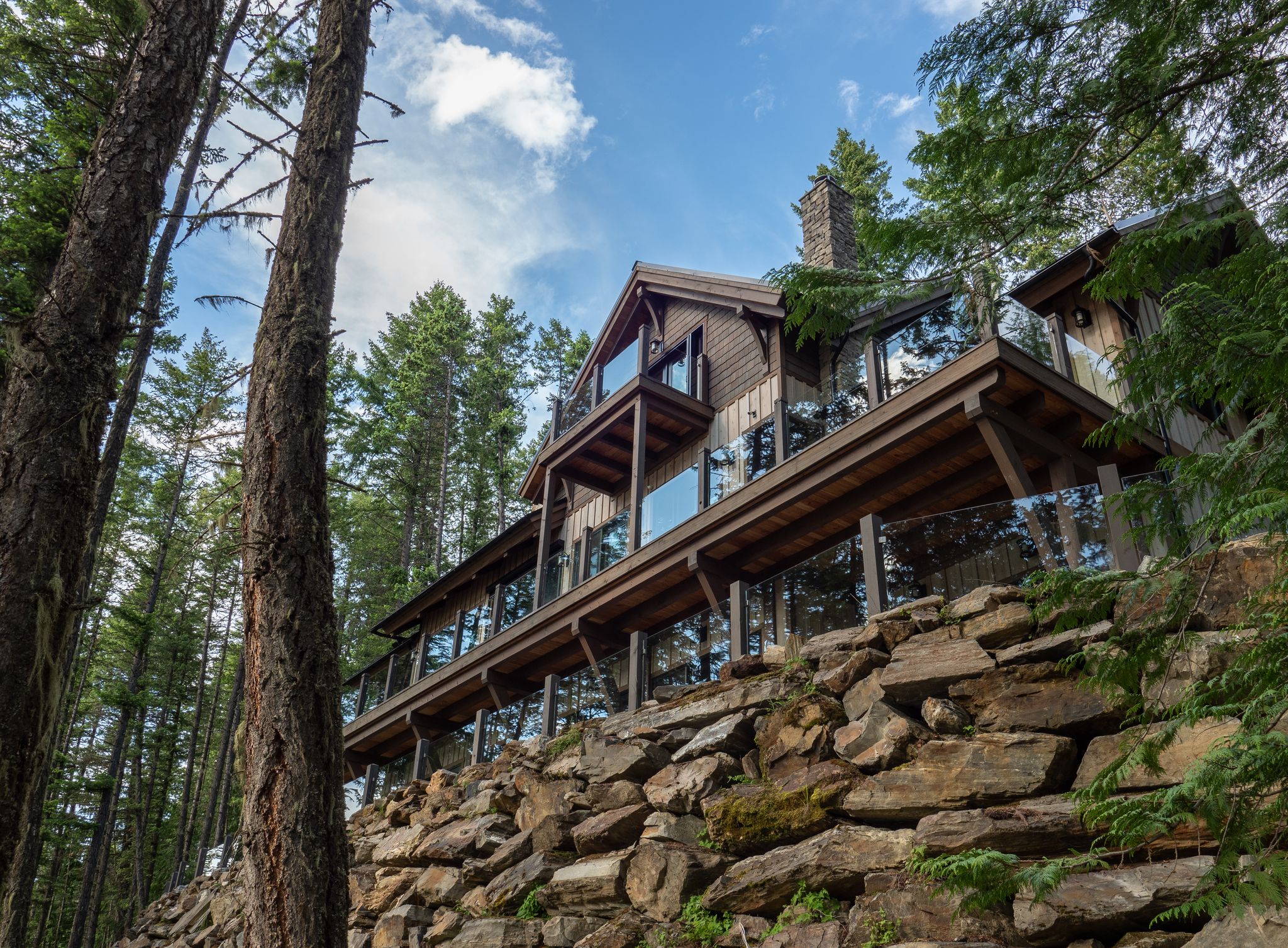
Timber frame homes exude the kind of stunning craftsmanship rarely seen in conventional residences. But a deeper look into these gorgeous structures reveals far more advantages than meets the eye. In fact, timber frame homes also provide better structural integrity, energy efficiency, insulation capabilities, and fire resistance than more standard housing options.
Timber Frames and Stick-Built Frames Explained
It’s not always easy to pinpoint how exactly timber frame home building methods differ from more common construction practices. After all, both homes are constructed by fastening together large pieces of wood. But each construction style varies by the size of its wood materials and how they fit together to form a stable frame for homes.
Timber Frame Home Building
Timber frame homes consist of incredibly strong and immense posts and beams. These pieces are to construct a frame that becomes the primary source of support for the entire structure. This technique makes additional load-bearing walls obsolete, allowing homeowners and designers to develop open floor plans that more authentically reflect their lifestyles and preferences.
Conventionally Framed Homes
Instead of giant timbers, stick-built homes are built using 2×4 frames to support both walls and ceilings. Usually, all the lumber pieces are delivered to the construction site and then assembled into the building structure. Many homeowners choose stick-built homes because of the availability of lumber, their relative affordability, and the immediacy of construction upon approval.
What are the Advantages of a Timber Frame House Over a Conventionally Framed Home?
Choosing to build a timber frame house with a reputable company like Hamill Creek doesn’t just make you a new homeowner, but a wise real estate investor too. Exploring the many benefits of timber frame home building methods will leave no doubt that you’ve made the right decision.
Insulation
Wood provides better insulation properties compared to many other house-building materials around. The Naturally Wood website reports that softwood contains 10 times the thermal insulating power than concrete or masonry and 400 times more than solid steel.
Since wood contains lower thermal conductivity than brick, concrete, and steel, it can trap heat more easily. As a result, timber frame homes are better insulated against cold weather, which can greatly cut down on heating costs.
Fire Resistance
The sheer size and density of the wood beams featured in timber frame homes make them more fire resistant than a conventionally framed home using 2×4 boards. When extreme heat or fire makes contact with timber frames, it creates a layer of char that becomes a protective shield against more advanced damage. Because 2×4 frames are made with small pieces of wood, charring cannot safeguard the structural integrity of the home in the same manner.
Building Cost
Buyers often pay premium prices for timber frame homes because they are built with quality materials and sophisticated craftsmanship. The durability of timbers also allows homes to maintain their allure and stability for over a century. Such factors keep timber frame homes among the most coveted residential real estate options available, while also assuring homeowners a great return on investment (ROI) if they decide to sell.
Environmental Impact
Wood is an ideal building material because unlike steel or concrete, it is a renewal resource since new trees can be planted to replace ones used for lumber. It’s also a natural insulator, which means that timber frame homes require fewer fossil fuels for heating than more mainstream options.
Questions on Timber Frame Home Building?
By building a timber frame home with Hamill Creek you are creating an extraordinary space that emphasizes practicality, efficiency, safety, and sustainability. Contact Us with questions!